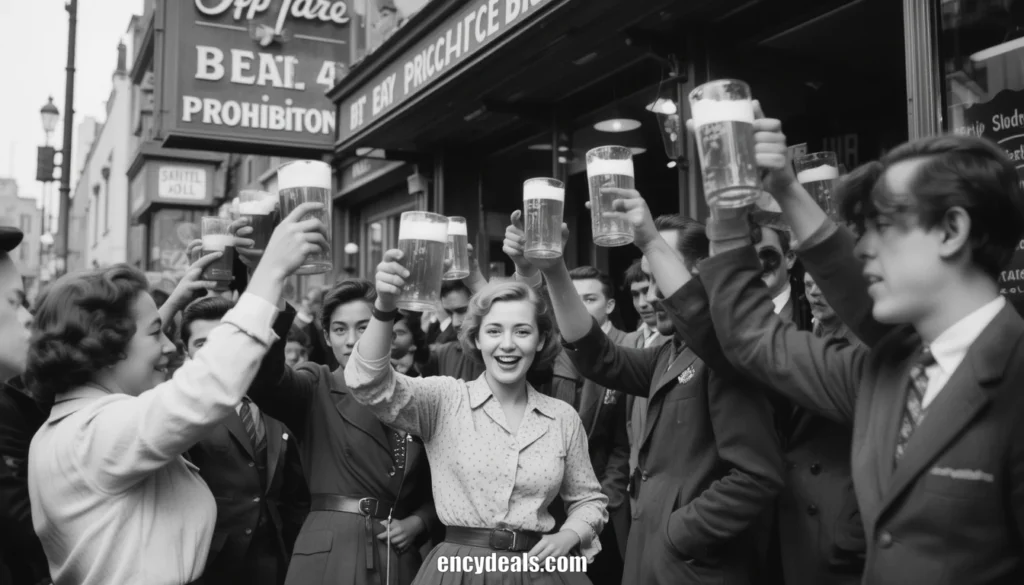April 7 National Beer Day: Ultimate Guide & Celebration Tips

National Beer Day, celebrated annually on April 7, marks the 1933 signing of the Cullen-Harrison Act, which legalized beer with up to 3.2% alcohol content after 13 years of Prohibition. This act, signed by President Franklin D. Roosevelt, was a precursor to the full repeal of Prohibition on December 5, 1933 (Repeal Day). Over time, April 7 evolved into a grassroots holiday, fueled by beer enthusiasts and breweries, celebrating freedom and American brewing heritage.
- April 7, 1933: Cullen-Harrison Act enactment.
- 1933–2024: Growth from small gatherings to nationwide festivals.
- 2017: Official recognition by the U.S. Congress via social media campaigns.
Cultural Significance of Beer
Why Beer Matters: Culture, Community, and Freedom
Beer has long been a social lubricant, fostering connections in pubs, festivals, and family gatherings. Its cultural imprint spans:
- Social Traditions: Oktoberfest, Irish pub culture, and tailgating.
- Media & Art: Beer’s role in films (“Beerfest”), iconic ads (Budweiser’s Clydesdales), and literary references (Shakespeare’s “Ale” mentions).
- Symbolism: National Beer Day embodies resilience, reflecting America’s post-Prohibition revival and the craft beer boom’s emphasis on local identity.

Celebrations and Traditions
National Beer Day Celebrations: Tours, Toasts, and Traditions
Popular Celebrations:
- Brewery Tours: Over 9,000 U.S. breweries offer tours (e.g., Sierra Nevada, Boston Beer Co.).
- Tastings & Festivals: Events like Denver’s Collaboration Fest or local tap takeovers.
- Classic Rituals: Toasting with phrases like “Prost!” (German) or “Sláinte!” (Irish).
Regional Customs:
- Midwest: “Kick the Keg” parties in Wisconsin.
- South: Beer-can chicken cookouts.
- International: UK’s cask ale celebrations, Germany’s beer garden festivals.
Economic and Social Impact
How Beer Boosts Economies & Communities
Contribution to the Beverage Industry & Local Economies:
The U.S. beer industry generates
79 billion to the economy, revitalizing small towns through jobs and tourism. Local breweries often partner with farmers for ingredients, creating circular economies.
Social Responsibility:
Major brands like Anheuser-Busch and Sierra Nevada champion initiatives like “Drink Responsibly” campaigns and DUI prevention programs. Nonprofits like Pints for Prostates use beer culture to raise health awareness. Breweries also prioritize inclusive hiring and community grants.
Tourism & Hospitality:
Beer tourism is a $12 billion niche, with destinations like Asheville, NC (“Beer City USA”) and Belgium’s Trappist brewery trails drawing millions. Hotels and restaurants curate beer-pairing menus, while festivals like Great American Beer Festival attract 60,000+ visitors yearly.

Beer Industry Insights
Innovation & Sustainability in Modern Brewing
Craft Beer & Microbreweries:
Craft beer holds 24% market share, with hazy IPAs, sour ales, and non-alcoholic brews driving growth. Microbreweries experiment with hyper-local ingredients (e.g., Maine’s seaweed-infused ale) and taproom-exclusive releases.
Sustainability Practices:
Breweries adopt carbon-neutral certifications, water recycling systems (e.g., New Belgium’s 95% reuse rate), and spent grain donations to farms. Solar-powered breweries (e.g., Sierra Nevada) and compostable packaging are rising trends.
Flavor Innovations:
- Experimental Brews: CBD-infused beers, pastry stouts, and savory flavors (tomato basil Gose).
- Tech Advancements: AI-driven fermentation monitoring and CRISPR yeast engineering.
Global Perspectives on Beer Culture
Beer Worldwide: Celebrations, Traditions & Heritage
International Beer Days:
- Germany: Oktoberfest (6.9 million attendees) celebrates Bavarian lagers with parades and stein-holding contests.
- Japan: Beer Day (April 1) marks the 1870 launch of Sapporo Brewery.
- Belgium: Zythos Beer Festival showcases 500+ Trappist and Abbey ales.
Cross-Cultural Exchange:
- Beer Styles: Mexican lagers inspire U.S. craft brewers, while Japanese matcha IPAs gain global fans.
- Collaborations: Guinness x Disney themed brews, Belgian-Indian fusion saisons.
Brewing Heritage:
- Czech Republic: Birthplace of Pilsner, with UNESCO-protected brewing traditions.
- Ethiopia: Tella (traditional honey beer) served in communal ceremonies.
Conclusion
National Beer Day is more than a celebration of hops and barley—it’s a testament to resilience, community, and creativity. From its roots in the Cullen-Harrison Act to today’s global craft beer revolution, beer has shaped economies, cultures, and traditions worldwide. The industry’s $331 billion economic impact underscores its role in job creation and tourism, while sustainability initiatives and flavor innovations prove brewing is evolving with the times.
Whether you’re raising a stein at Oktoberfest, sipping a hazy IPA at a local microbrewery, or exploring Trappist ales in Belgium, beer remains a universal language of connection. As we honor April 7, let’s toast to the pioneers who revived brewing post-Prohibition and the modern visionaries pushing boundaries with eco-friendly practices and bold flavors.
FAQs
1. Why is National Beer Day celebrated on April 7
April 7 marks the day the Cullen-Harrison Act took effect in 1933, legalizing beer sales after Prohibition. Signed by FDR, this law paved the way for the 21st Amendment repeal. Today, it honors brewing heritage and freedom.
2. How can I celebrate National Beer Day responsibly?
- Visit local breweries offering tours or tastings.
- Use ride-sharing services if drinking.
- Pair beers with food to pace consumption.
Many breweries partner with groups like Responsibility.org to promote awareness.
3. What’s the difference between National Beer Day and Oktoberfest?
- National Beer Day (April 7, U.S.) focuses on post-Prohibition freedom and American brewing.
- Oktoberfest (September/October, Germany) celebrates Bavarian culture with Märzen lagers and
4. Are non-alcoholic beers part of National Beer Day?
Absolutely! Non-alcoholic craft beers (like Athletic Brewing Co.) are surging in popularity, with a 35% market growth in 2023. They let everyone join the celebration mindfully.
5. How has craft beer impacted local economies?
Craft breweries generate $79 billion annually for the U.S. economy. They create jobs, support agriculture (e.g., local hop farms), and boost tourism—like Asheville, NC’s “Beer City” scene.
6. Can I start my own brewery for National Beer Day?
Yes! Research permits, equipment, and local markets. Many states offer grants for small breweries.







